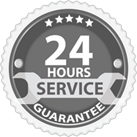BLOGS
Investing in a new furnace is a great way to improve your home’s comfort and energy efficiency. However, to maximize its performance and lifespan, it’s essential to follow a few key steps. Here are some tips to help you get the most out of your new heating system.
1. Set Up a Smart Thermostat
A smart or programmable thermostat can help you maintain consistent temperatures while reducing energy waste. Set schedules that match your daily routine to avoid unnecessary heating when you’re away or asleep. This not only improves efficiency but can also lead to lower utility bills.
2. Change Air Filters Regularly
A clogged or dirty air filter restricts airflow, making your furnace work harder and reducing its efficiency. Check the filter monthly and replace it as needed—usually every 1-3 months, depending on usage and indoor air quality.
3. Keep Vents and Registers Clear
Ensure that your home’s vents and registers are free from obstructions like furniture, rugs, or curtains. Proper airflow is essential for efficient heating and even temperature distribution throughout your home.
4. Schedule Annual Maintenance
Routine maintenance is key to keeping your furnace running efficiently. Have an HVAC professional inspect and tune up your system at least once a year. This service typically includes cleaning components, checking for potential issues, and ensuring optimal performance.
5. Improve Home Insulation
Your furnace works harder if heat escapes through gaps, windows, or poorly insulated walls. Enhance your home’s insulation by sealing air leaks, adding weatherstripping, and using thermal curtains to maintain warmth.
6. Use Ceiling Fans in Reverse
During the winter, setting ceiling fans to rotate clockwise helps distribute warm air more evenly. This simple trick can help maintain comfortable temperatures and reduce the strain on your furnace.
7. Monitor Your Energy Bills
Keep an eye on your energy usage to spot any unusual increases, which may indicate inefficiency or a potential issue with your furnace. Addressing these problems early can prevent costly repairs and extend the life of your heating system.
8. Be Aware of Warning Signs
Strange noises, inconsistent heating, or increased energy bills can signal that something is wrong with your furnace. Addressing these issues promptly with professional help can prevent breakdowns and costly repairs.
Conclusion
A new furnace is a valuable investment in your home’s comfort and efficiency. By following these best practices—such as regular maintenance, optimizing airflow, and improving insulation—you can ensure that your heating system performs at its best for years to come. Taking proactive steps now will not only keep you warm but also help you save on energy costs and avoid unexpected breakdowns.
Leave a Reply
Your email address will not be published. Required fields are marked *
Comment
Search
Recent Post

Recent Comments
Mary Baskerville on The Hidden Rewards of Regular HVAC Maintenance and Service Contracts
Reginald Kaiser on Harnessing Earth’s Energy: The Wonders of Geothermal Heating and Air Conditioning
Categories
AC
Air Quality
Air source heat pump
Boiler
condenser
Furnace
Geothermal
Heating
HVAC
indoor comfort
Installation of AC
Insulation
Maintenance
Technology
Uncategorized
Recent Post


